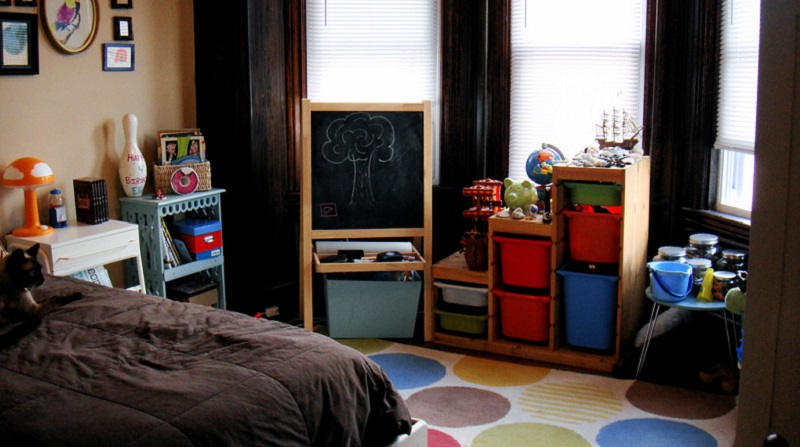
24 Oct Choosing the Best Colors for a Child’s Room
Did you know that pink used to be the preferred color for little boys? As Smithsonian magazine reports, parents of boys in 1927 were encouraged to dress them in pink. Meanwhile, parents of baby girls should choose blue because “pink, being a more decided and stronger color, is more suitable for the boy, while blue, which is more delicate and dainty, is prettier for the girl.” Would that advice affect how you decorate your child’s room?
What Do Colors Mean?
If pink inherently had qualities most girls respond to in a positive manner, there would be a history of girls all over the world always preferring it. Instead, U.S. marketing departments deemed pink a “feminine” color in the 1940s. They also assigned blue to boys.
Researchers widely agree that our emotional responses to colors can be subjective. Most people realize that colors can affect moods. And although some research reveals that certain colors sometimes have certain effects on some of us, it turns out how color impacts your mood largely depends on your upbringing and culture.
To use another example, in the United States, we think of white as a color of purity and peace and often use it for weddings. Meanwhile, in China, white signifies death and mourning and people associate it with funerals.
Or, you might detest the color green, a supposed “soothing” color, because you were bullied every day at school by a kid in a green jacket.
Considering how complicated and idiosyncratic our responses to colors can be, how can you choose the best colors for a child’s room? Is there a “best” color?
Do Colors Ever Affect Behavior?
We know that our responses to color can come from our culture or our personal history. So is there any evidence that certain colors have certain effects on people in general?
Since colors are everywhere, you might be surprised to learn there’s been little actual research done on this topic. According to verywell.com, most scientists feel that we should be wary of the huge number of claims out there surrounding color psychology.
People do have color preferences. To name one standout, a majority all over the world chooses blue as their favorite color. But no one really knows why. Some suggest it’s because the sky is blue.
Also, color preferences change over a person’s lifetime or even a day! According to Smithsonian magazine, “when people are presented repulsive objects in a color they liked before—say a red, runny eyeball instead of a ripe cherry—they have a decreased preference for the previously liked color.”
Ideas to Help Choose “Best” Colors for a Child’s Room
So how do you pick out colors when decorating a child’s room? Start with these ideas:
- Pick a unique object as a focal point. Maybe you found an elaborate, beautifully painted chair at an antique shop. Try color matching based on three of the tints on the chair. Choose one for the walls, one for the trim and the third one for highlights like pillows, bedspread, and frames.
- Focus on a child’s favorite things. If your child is older and has a passion for something like Star Wars or fantasy creatures like fairies, you can build your color theme around that. If your child has a lot of toys relating to that theme, you’re on your way. Just be careful it’s something you think your child will love for some time. You don’t want to be asked to re-paint next month!
- Choose colors for all ages. Many parents choose a neutral palette like black and white, or shades of brown that will look good as a setting for all the child’s belongings but will also continue to look good as the child grows into a teenager.
- Let your child pick! Whether it’s only for one wall, like a shiny metallic blue to represent the ocean, or the whole room, or a huge double door painted with chalkboard paint, a fun way to choose the best colors is to confer with your child. Ask him or her what they’d love best. This is one way to create a color theme they will love for a long time.
However you choose to decorate your child’s room, have fun and make it enjoyable for both of you. Remember, you can make changes later, as your child’s tastes will inevitably evolve as he or she gets older.
PHOTO: Amy Gizienski / CC 2.0




No Comments